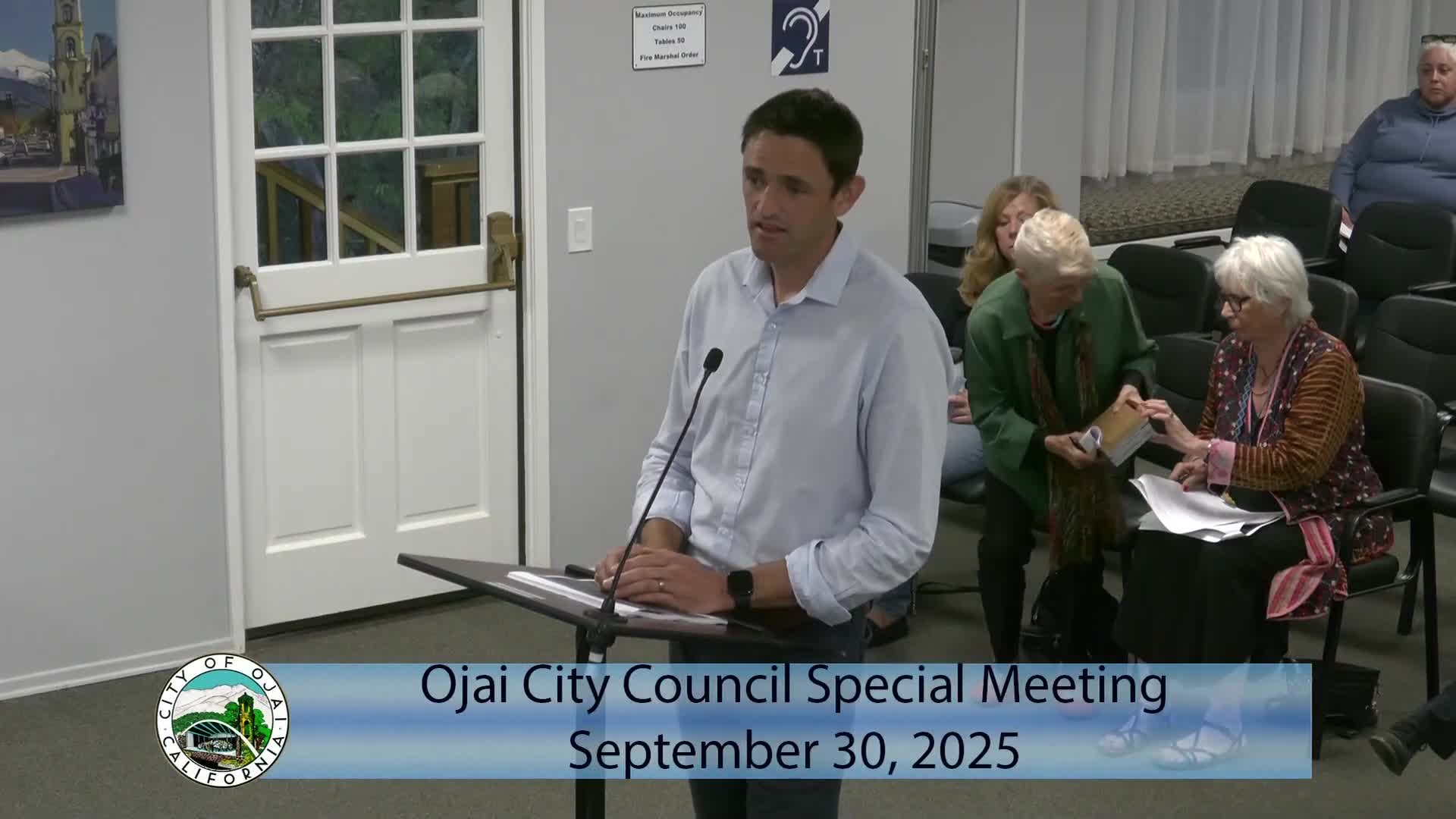Ventura County Discusses Fire Safety Measures for High-Risk Development Project
October 01, 2025 | Ojai City, Ventura County, California
This article was created by AI summarizing key points discussed. AI makes mistakes, so for full details and context, please refer to the video of the full meeting. Please report any errors so we can fix them. Report an error »

In the heart of Ojai, California, city officials gathered for a special meeting that underscored the community's commitment to safety and innovation in building practices. As discussions unfolded, one key topic emerged: the fire resistance of new construction materials designed for high-risk areas.
A representative from a construction company shared insights into a new panel product that has undergone extensive fire testing. "It's quite good largely because it's so dense," he explained, highlighting how the material's density prevents oxygen from fueling flames, allowing it to char and blacken without igniting. This innovative approach has shown promising results, particularly in a recent test where a building was subjected to wildfire conditions in Australia. The interior temperatures remained remarkably low, earning the product a designation of wildfire safety under Australian building codes.
However, the conversation took a serious turn as officials acknowledged the challenges posed by Ojai's designation as a "very high" fire hazard severity zone. The county supervisor had previously raised concerns about emergency access and circulation in such areas, prompting city officials to engage with the Ventura County Fire Department.
In a proactive move, city representatives met with fire officials to discuss site access and safety measures. They emphasized the importance of having adequate turnaround space for emergency vehicles and sufficient water flow from hydrants. The project is designed to be fully sprinklered and alarmed, ensuring that safety measures are not just adequate but exceed basic requirements.
As the meeting concluded, it was clear that Ojai's leadership is not only focused on advancing construction technology but also on ensuring that safety remains paramount in the face of environmental challenges. The discussions reflect a community that is both forward-thinking and deeply aware of the risks posed by its natural surroundings, setting a precedent for responsible development in high-risk areas.
A representative from a construction company shared insights into a new panel product that has undergone extensive fire testing. "It's quite good largely because it's so dense," he explained, highlighting how the material's density prevents oxygen from fueling flames, allowing it to char and blacken without igniting. This innovative approach has shown promising results, particularly in a recent test where a building was subjected to wildfire conditions in Australia. The interior temperatures remained remarkably low, earning the product a designation of wildfire safety under Australian building codes.
However, the conversation took a serious turn as officials acknowledged the challenges posed by Ojai's designation as a "very high" fire hazard severity zone. The county supervisor had previously raised concerns about emergency access and circulation in such areas, prompting city officials to engage with the Ventura County Fire Department.
In a proactive move, city representatives met with fire officials to discuss site access and safety measures. They emphasized the importance of having adequate turnaround space for emergency vehicles and sufficient water flow from hydrants. The project is designed to be fully sprinklered and alarmed, ensuring that safety measures are not just adequate but exceed basic requirements.
As the meeting concluded, it was clear that Ojai's leadership is not only focused on advancing construction technology but also on ensuring that safety remains paramount in the face of environmental challenges. The discussions reflect a community that is both forward-thinking and deeply aware of the risks posed by its natural surroundings, setting a precedent for responsible development in high-risk areas.
View full meeting
This article is based on a recent meeting—watch the full video and explore the complete transcript for deeper insights into the discussion.
View full meeting
